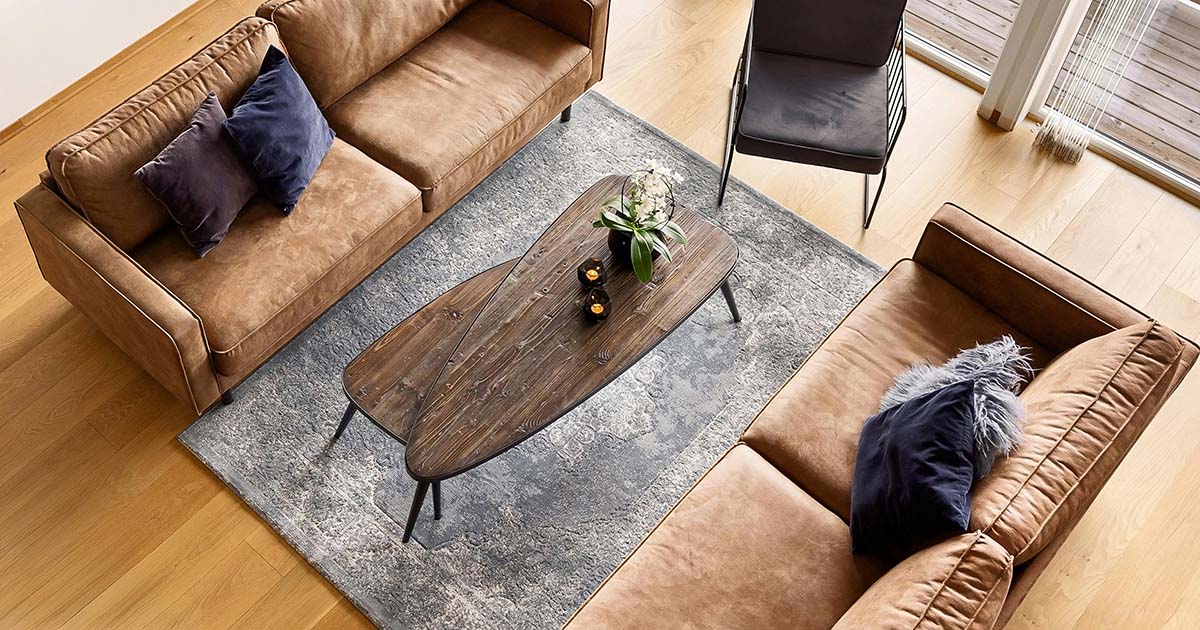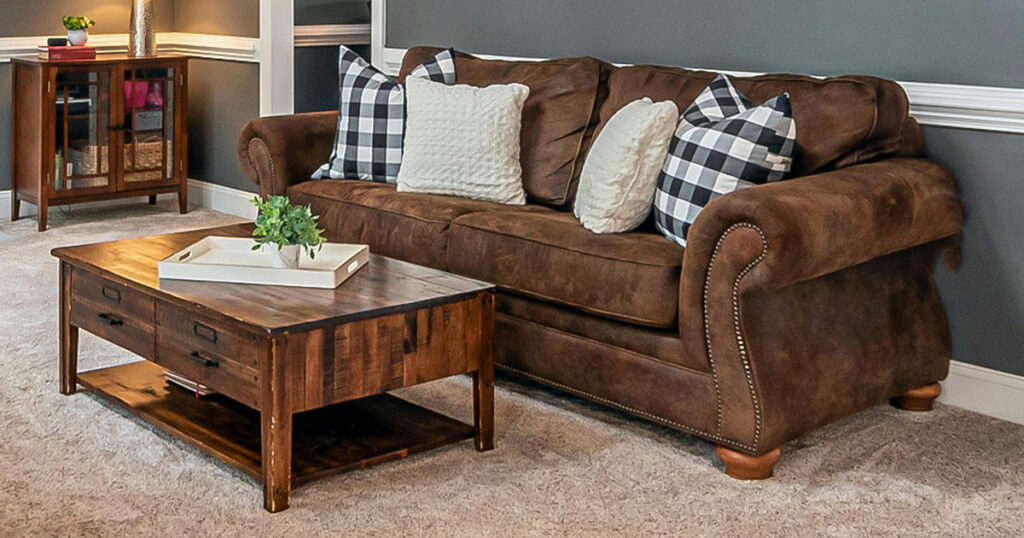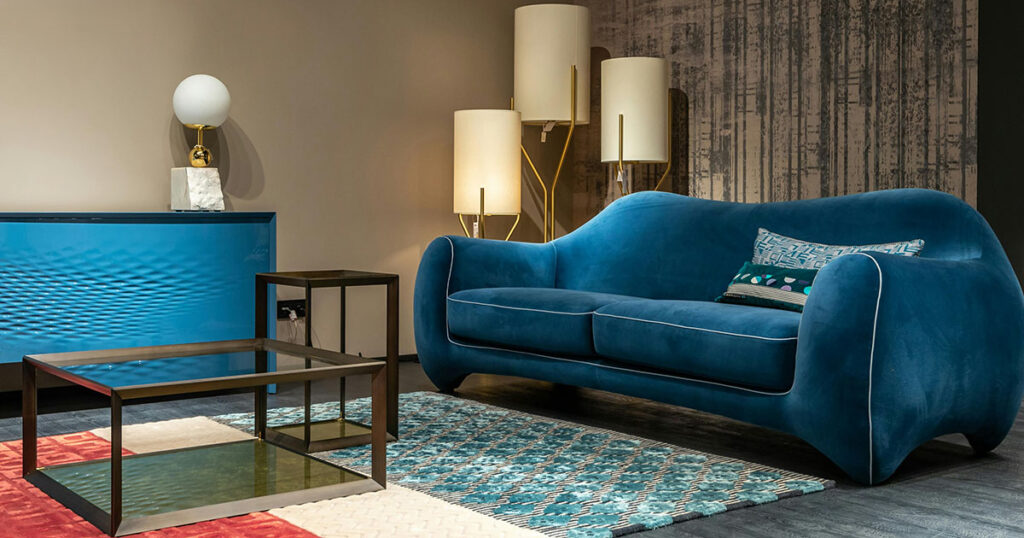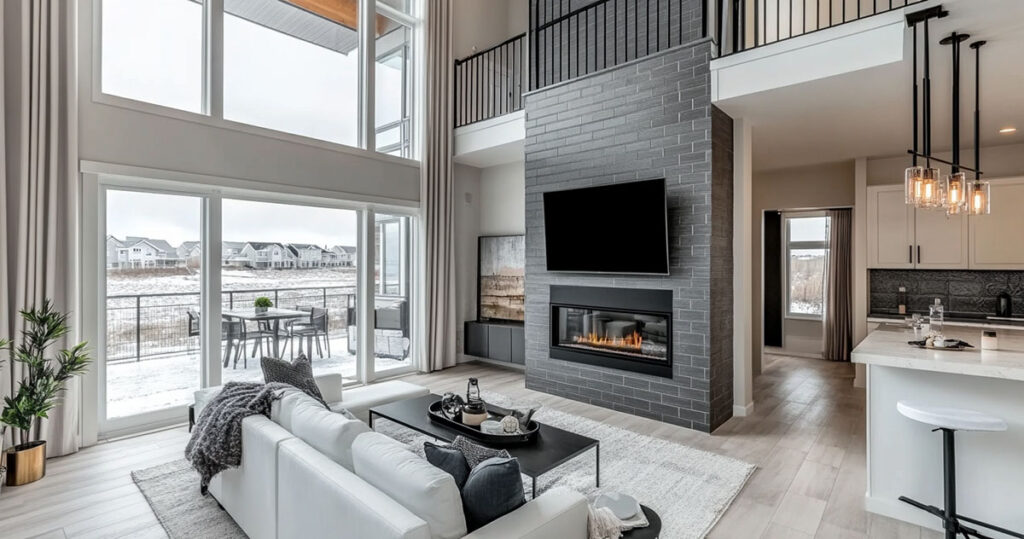When it comes to transforming your living room, few elements make as big an impact as a well-chosen rug.
Tufted rugs, with their plush feel and endless design possibilities, are among the most popular options today.
Let’s explore how to select the ideal tufted rug that will enhance your living space while reflecting your personal style.
What Makes Tufted Rugs Special?
Tufted rugs are created by punching yarn through a fabric backing with a specialized tool called a tufting gun. This technique forms loops that can be left intact or cut to create different textures.
What makes them stand out is their ability to showcase intricate designs at more accessible price points than hand-knotted alternatives.
The construction process allows for beautiful patterns and textures that can serve as the foundation for your entire room design.
While not typically heirloom pieces like hand-knotted Persian rugs, quality tufted rugs can bring warmth and style to your living room for many years.
Design Considerations
Finding the perfect tufted rug involves thinking about how it will complement your existing décor and what atmosphere you want to create. Here are the key design elements to consider:
Color Selection
The color of your rug sets the tone for the entire room. For a harmonious look, choose colors that complement your existing furniture and wall colors.
If you want the rug to be a focal point, opt for bolder hues or striking patterns that contrast with your other furnishings.
Neutral tones like beige, gray, and ivory create a versatile foundation that works with changing décor, while rich jewel tones like burgundy, navy, or emerald add depth and luxury. Consider how natural light affects colors throughout the day in your specific living room.
Pattern Possibilities
Tufted rugs come in nearly endless pattern options, from traditional to contemporary designs:
Traditional patterns like Persian medallions or Oriental motifs bring timeless elegance to your space. They work beautifully in classic interiors but can also add a touch of heritage to modern rooms.
Geometric designs range from simple grids to complex Islamic-inspired patterns. These versatile options can either anchor a busy room or add visual interest to minimal spaces.
Abstract and artistic patterns make bold statements and can function as floor art. These work particularly well in contemporary spaces where the rug becomes a conversation piece.
Textural patterns created through varied pile heights add subtle dimension even in single-color rugs. These are perfect for layered, nuanced interiors where touch is as important as appearance.
Size and Placement
The right size rug creates balance and defines your seating area. Too small, and the room feels disconnected; too large, and the space may feel cramped.
For most living rooms, aim for a rug large enough that at least the front legs of all furniture sit on it.
This creates a cohesive seating area. In larger rooms, having all furniture completely on the rug creates a luxurious feel.
Leave about 18 inches of floor showing around the edges of the room for a balanced look.
This framing effect highlights both your beautiful floors and your chosen rug.
Tufted Rugs for Different Interior Styles
Tufted rugs adapt beautifully to various design aesthetics. Let’s explore how they enhance different interior styles:
Modern and Contemporary Spaces
In clean-lined, contemporary living rooms, tufted rugs with subtle geometric patterns or abstract designs ground the space without overwhelming it. Neutral colors like gray, cream, or cool blue complement streamlined furniture while adding necessary warmth.
A large area tufted rug helps define the living area within open floor plans, creating a visual boundary that brings coherence to the space. The soft texture balances hard surfaces typical in modern interiors, making the room feel more inviting.
For ultra-modern spaces, consider a solid rug with textural interest or a tone-on-tone pattern that adds depth without busyness.
Traditional and Transitional Living Rooms
Traditional living rooms benefit from tufted rugs with classic patterns like medallions, borders, or floral motifs. Rich, harmonious color palettes featuring deep reds, navy, olive green, or beige create a sense of warmth and refinement.
In transitional spaces that blend traditional and contemporary elements, look for traditional patterns rendered in updated colors or with a slightly distressed finish. This approach honors classic design while feeling fresh and current.
The plushness of a medium to high-pile tufted rug adds comfort underfoot, complementing the cozy, inviting atmosphere typical in traditional settings.
Bohemian and Eclectic Interiors
Bohemian-inspired living rooms embrace tufted rugs with bold colors and global-inspired patterns. Moroccan, tribal, or Southwestern motifs add character and serve as focal points in these free-spirited spaces.
Don’t be afraid to mix patterns – a vibrant tufted rug can happily coexist with patterned pillows and eclectic art in bohemian interiors. The key is finding a common color thread that ties everything together.
For added texture and visual interest, consider layering a smaller tufted rug over a larger natural fiber rug. This creates depth and enhances the collected, personalized feel that defines bohemian style.
Scandinavian and Minimalist Design
Scandinavian-inspired living rooms favor tufted rugs with simple, clean designs in light, neutral colors. The emphasis here is on texture rather than busy patterns – think soft wool in cream or light gray with subtle geometric elements.
These rugs add necessary warmth to the light woods and white walls common in Nordic design. A thick, nubby wool tufted rug brings that essential “hygge” (coziness) factor to minimalist spaces.
Popular choices include Berber-style tufted rugs with simple diamond patterns on ivory backgrounds or monochromatic textural rugs that add interest without visual clutter.
Regional Style Preferences
Interesting patterns emerge when we look at how different regions incorporate tufted rugs into their living rooms.
North American Trends
North American homes typically use tufted rugs to anchor seating arrangements and define spaces within open floor plans. There’s a tendency toward practical colors that hide everyday wear in family-friendly spaces.
Contemporary styles often feature geometric or abstract patterns in neutral tones, while transitional homes might include updated versions of traditional designs. The emphasis is on creating a comfortable, welcoming living area where the rug complements rather than dominates the space.
European Approaches
European living rooms often feature tufted rugs as integral design elements rather than simply functional pieces. There’s a willingness to use richer colors and more artistic patterns as statement pieces.
In Scandinavian homes, textural, neutral rugs add warmth to minimalist interiors. Southern European spaces might incorporate vibrant colors and patterns inspired by regional traditions. European urban apartments often use rugs to blend historic architectural elements with contemporary furniture.
The emphasis in Europe tends to be on quality and craftsmanship, with many homeowners choosing wool tufted rugs designed to last for many years.
Middle Eastern Influences
Middle Eastern living rooms traditionally place great importance on rugs as cultural art forms. While hand-knotted rugs have a long history in the region, tufted versions now offer accessible alternatives.
Colors tend toward rich jewel tones – burgundy, navy, emerald, and gold – often in traditional patterns that reflect regional heritage. Geometric designs inspired by Islamic art are particularly popular, appearing in both traditional and contemporary settings.
In keeping with the culture of hospitality, Middle Eastern living rooms typically feature large rugs that cover most of the floor, creating an inviting, comfortable gathering space for family and guests.
Practical Considerations
Beyond pure aesthetics, several practical factors influence rug design choices:
Traffic Patterns
High-traffic living rooms benefit from low to medium-pile tufted rugs in darker colors or patterns that hide soil. These areas might also call for more durable materials like wool or synthetic blends.
For formal living rooms or spaces used less frequently, you can indulge in higher piles and lighter colors that might be impractical in busy family rooms.
Comfort Needs
If your living room is a place where people often sit on the floor (for playing games or watching movies), a higher pile rug with substantial padding underneath creates a more comfortable experience.
For homes in colder climates, wool tufted rugs provide natural insulation and warmth underfoot. In warmer regions, lower pile heights and natural fibers like cotton might be more comfortable year-round.
Maintenance Considerations
Your lifestyle affects what designs will work best long-term. Homes with children and pets might fare better with patterned rugs that hide inevitable spills and stains, while solid-colored rugs show every mark.
Darker, multi-colored patterns conceal soiling between cleanings, while very light or very dark solid rugs show everything. Medium tones with some pattern variation often strike the right balance between style and practicality.
Making Your Final Selection
When you’ve narrowed down your options, consider these final steps:
View the rug in your actual space if possible, or at least check samples at home. Colors and patterns look dramatically different under store lighting versus your living room.
Consider how the rug will age with your lifestyle. Quality wool tufted rugs develop character over time, while cheaper options may need replacement sooner.
Trust your instincts.
The right rug should make you feel good every time you enter the room.
If you love it now, you’ll likely enjoy it for years to come.




